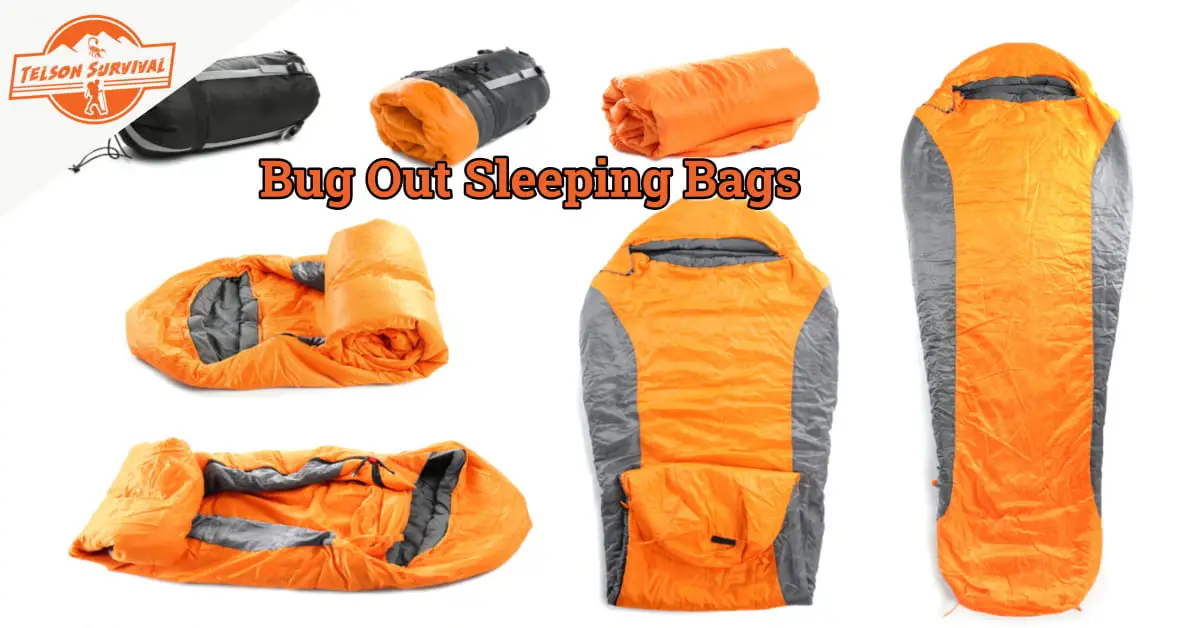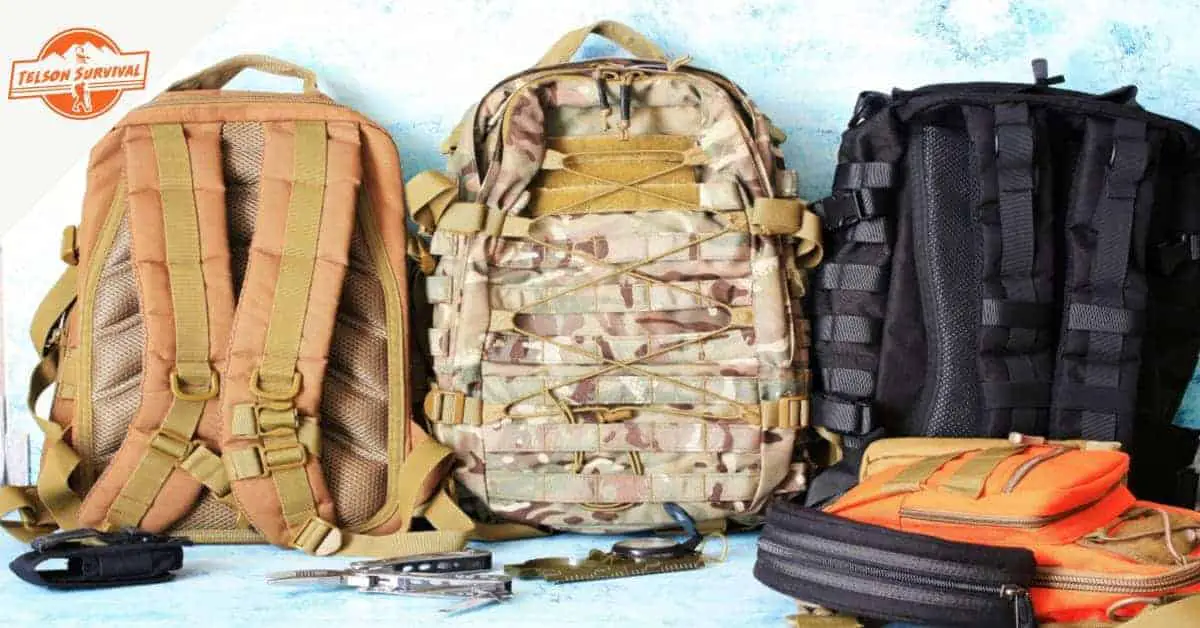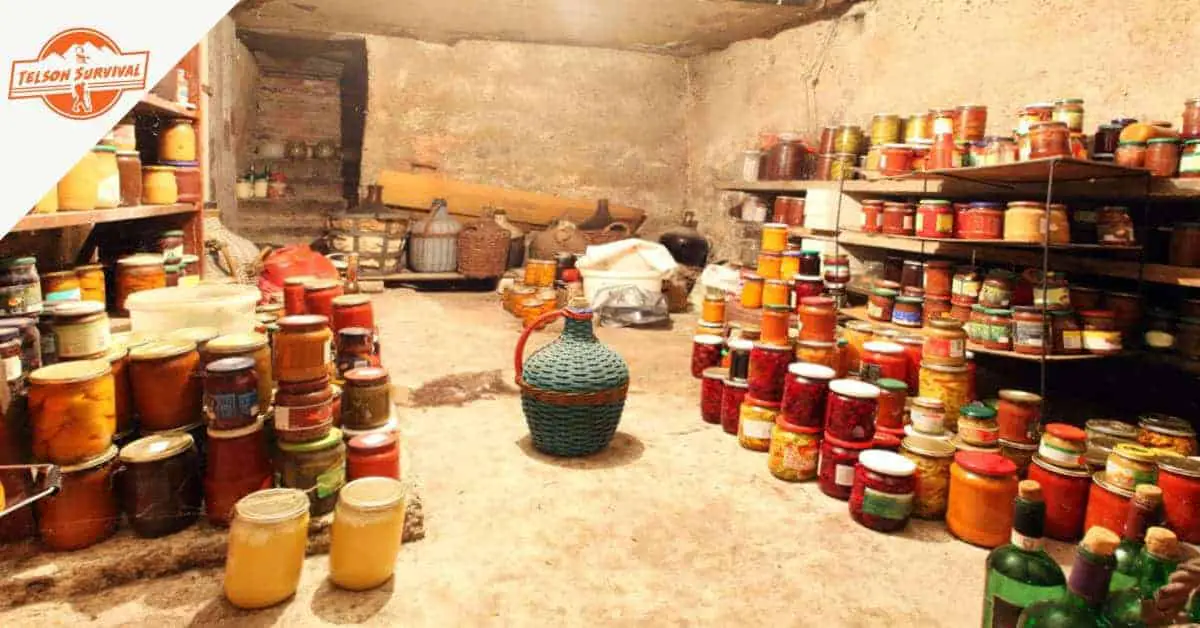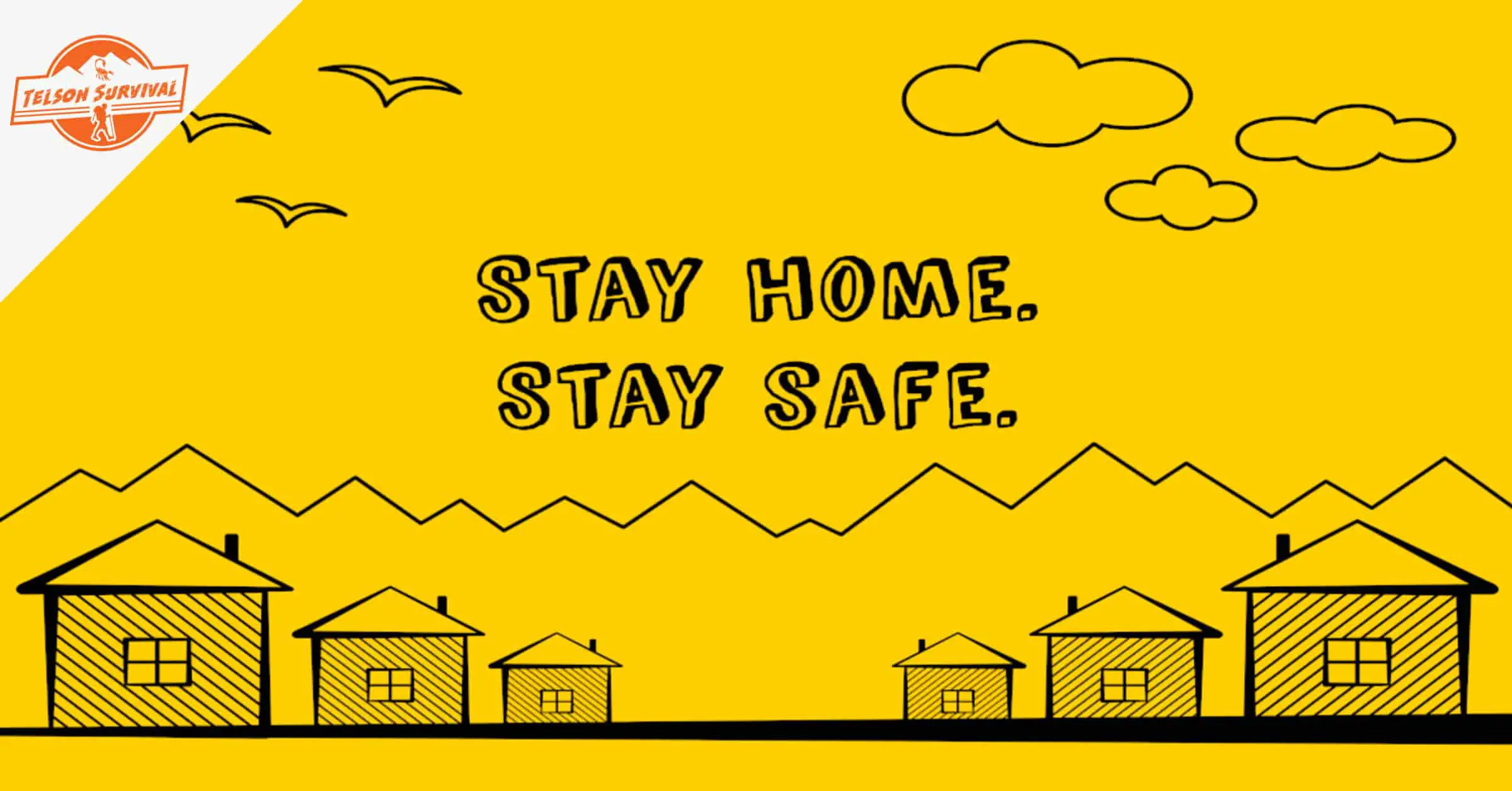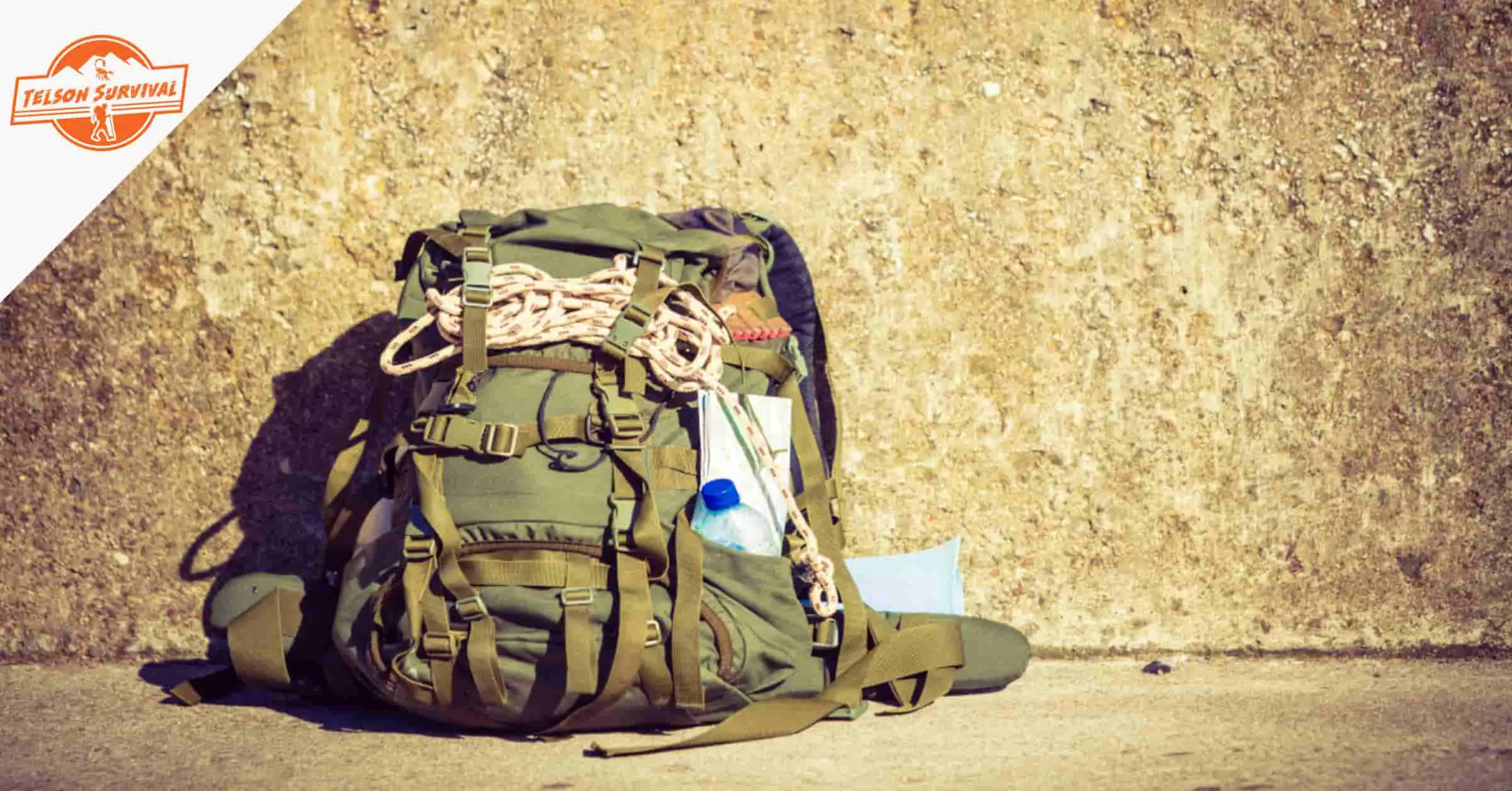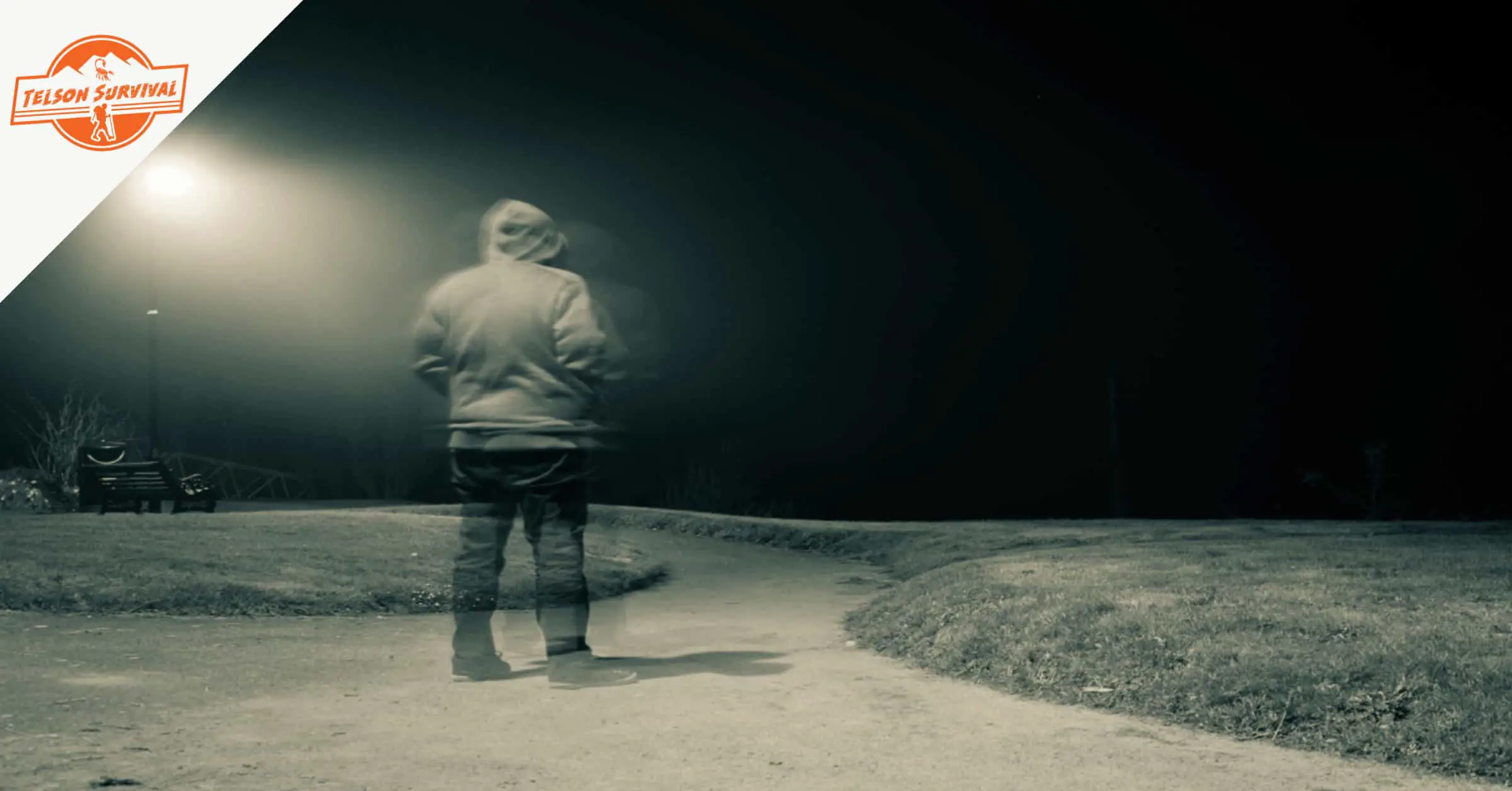Sleeping tight is not the easiest thing to do, in the real sense of the word, when you are running away from a SHTF situation. But, sleeping tight in a bug out sleeping bag is a great consolation when you are braving a cold winter night in the wild and trying to figure out what your next survival move should be.
In the world of preppers, the survival rule of threes suggests that shelter and sleeping gear are above food and water in the list of survival priorities. In other words, if you are not protected from extreme heat and cold, you will not survive beyond 3 hours even though you have water and food supplies.
So, when prepping for disaster, it’s important to bear in mind that the choice of a bug out sleeping bag could be the ‘warm’ line between life and death.
But is a bug out sleeping bag really indispensable for preppers?
We’ll answer you that in a bit, then proceed to give you a list of the 6 best bug out sleeping bags according to type. Later in the article, we’ll also tell you what factors to consider when choosing your bug out sleeping bag. Read to the end to avoid missing any survival detail!
In a hurry? If you just want to get to our conclusions, here are our top picks and recommendations!
Last update on 2025-01-15 / Affiliate Links / Images from Amazon Product Advertising API
Should Preppers have a Sleeping Bag in their Bug Out Bag?
Yes. Every prepper should have a sleeping bag in their bug out bag as their priority shelter and sleeping gear. There are a number of advantages that justify why preppers should have a sleeping bag in their bug out bag. Let’s discuss the two main ones:
Sleeping bags offer the best protection from extreme weather when used alone
Compared to other sleeping gear, sleeping bags will protect you best from extreme weather when used alone than other shelter and sleep gear like a tent, tarp, or blanket.
Take a blanket and a sleeping bag, for example. If you have a blanket in freezing temperatures you’ll need to keep fixing it to stay well covered, plus it’s almost impossible that a blanket covers you from head to toe unless you are lying down, which is not advisable if you only have a blanket in extreme cold.
With a sleeping bag, you simply slip in and you are covered and don’t need to keep trying to get the bag to cover exposed parts of your body.
A sleeping bag can be used anywhere
Even though a sleeping bag’s efficiency does depend on where you use it, the basic fact is that you can use it anywhere. Let’s compare it with a hammock. If you are in the desert-type wilderness where finding a tree is a nightmare, a hammock will be as good as not there if you can’t suspend and use it.
Instead, with a sleeping bag, you can easily make a sand trench and lie in it with your sleeping bag to counter the extreme nighttime desert temperatures. However, to enjoy the benefits of a sleeping bag in a SHTF situation, you need to have a high-quality one, which adds up to knowing how to choose the best survival sleeping bag.
We’ll tell you about how to choose the best sleeping bag a little later in the article. For now, we want to review the best bug out sleeping bags considered by type.
Best Bug Out Sleeping Bags (By Type)
By now you know that a good quality bug out sleeping bag is a lifesaver. And since having one is so crucial, we have it at heart to give you the list of the best bug out sleeping bags. Here we go!
Best Overall Sleeping Bag for Bugging Out - Oaskys Camping Sleeping Bag
If you’ve ever wanted every good feature in a single sleeping bag, then the Oaskys Camping Sleeping Bag is your go-to bug out bag sleeping gear. This 3-seasons sleeping bag is made with weather-resistant nylon on the outside and has double polyester filling to keep you warm on cold nights and comfortable on warmer nights.
Oaskys Camping Sleeping Bag key features:
- Extremely low price.
- 10°C to 20°C temperature rating.
- 31.5ʺ x 86.6"
- 3.2lbs.
- Double polyester filling.
- Separated zipper.
- Comes with a compression sack.
Last update on 2025-01-14 / Affiliate Links / Images from Amazon Product Advertising API
Best Lightweight Bug Out Sleeping Bag - TETON Sports LEEF Lightweight Mummy Sleeping Bag
No prepper will pass by a quality sleeping bag that is also lightweight. With only 3.45lbs to add into your backpack, preppers who foresee bugging out in cold temperatures can use the TETON mummy sleeping bag to stay warm and dry.
TETON Sports LEEF Lightweight Mummy Sleeping Bag key features:
- 0°F temperature rating.
- Full size 84" x 32" x 17" (compressed packing size 15.5" x 9" x 9").
- Added insulation foot box.
- 3-piece ultra-puff hood to keep your head warm.
- Breathable micro polyester lining for added comfort.
- Interior storage pocket for, wallet, keys, and phone.
- Comes with a free compression sack.
- Hang loops for long-term storage.
- Taped, anti-snag zippers.
Last update on 2025-01-15 / Affiliate Links / Images from Amazon Product Advertising API
Best Ultralight Survival Sleeping Bag - REVALCAMP Sleeping Bag
An ultra-light bug out sleeping bag doesn’t have to be of poor quality. That’s if you go for one that customers can swear by like the REVALCAMP sleeping bag.
This bag is only 1.85lbs and is great for persons with a height under 6 feet. Anyone prepping for disaster with the entire family in mind will love the many colors from which you can choose a sleeping bag for each family member.
REVALCAMP Sleeping Bag key features:
- Affordable.
- Extremely light.
- 30ʺ x 71ʺ.
- Plush filling for comfort warmth.
- Water-resistant material.
- Comes with a compression sack.
- Two bags can be zipped together.
Last update on 2025-01-15 / Affiliate Links / Images from Amazon Product Advertising API
Best Double Sleeping Bag for Bugging Out - Sleepingo Double Sleeping Bag
Double sleeping bags aren’t your choice if you are going to be alone inside as you’ll be losing too much body heat to the empty space. But, if you are bugging out with a young child, a baby, or want to keep your partner close to you, a double bug out sleeping bag can come in handy.
The best choice to make is to go for one that can also be separated and work as two different sleeping bags when need be, which is why we chose the Sleepingo Double Sleeping Bag.
Sleepingo Double Sleeping Bag key features:
- Fairly priced for a double-wide sleeping bag.
- Queen size XL.
- Tetron cotton (cotton and polyester) filling.
- 3lbs.
- 87ʺx59ʺ.
- 32° (comfort) rating.
- Comes with 2 traveling pillows.
- Can be separated to make two individual sleeping bags.
- Extra strong camping grade and waterproof polyester fabric.
Last update on 2025-01-15 / Affiliate Links / Images from Amazon Product Advertising API
Best Bug out Sleeping Bag for Cold Weather - Military Modular Sleep System
The Military Modular Sleep System is sold as a 4-piece sleeping system: a Patrol Bag, Bivy Cover, Intermediate Cold Weather Bag, and Stuff Sack.
The Intermediate Cold Weather Bag alone is good enough to keep you warm in extremely cold weather as it is rated for 30°F and -10°F. But, used together, the sleeping kit is rated for up to -50°F.
Military Modular Sleep System key features:
- 3lbs.
- 24ʺ x 17.9ʺ x 10.3ʺ.
- 50°F and -50°F overall temperature rating.
- 50°F and 30°F Patrol Bag temperature rating.
- 30°F and -10°F Intermediate Cold Weather Bag temperature rating.
- Opens end to end.
- Draft flap to prevent heat loss.
- Adjustable hood.
- Bivy cover made with durable 3-layer GORE-TEX fabric.
Last update on 2025-01-15 / Affiliate Links / Images from Amazon Product Advertising API
Best Budget Bug out Sleeping Bag - SOULOUT Sleeping Bag
If you are imagining that our last choice is our best budget pick because it costs little, you should know instead that it’s an affordable price for great sleeping bag features.
For less than 30 bucks, the SOULOUT sleeping bag delivers a high-quality sleeping gear that’s easy to include in your bug out bag as it can also be compressed in the included compression sack. The SOULOUT sleeping bag is also a 3-4 season option for cold or warmer weather.
SOULOUT Sleeping Bag key features:
- Affordable.
- Nylon waterproof outer material.
- Duck down filling.
- 33.5ʺ x 86.7ʺ (compressed size 13.8ʺ x 7.9ʺ).
- 2.7lbs.
- Foot box for warmer feet.
- Double zipper.
- Comes with a compression bag.
Last update on 2025-01-15 / Affiliate Links / Images from Amazon Product Advertising API
What to Look for When Buying a Prepper Sleeping Bag
Now that you have your list of the best bug out sleeping bags, you might be wondering what factors we considered to arrive at the decision that these are the best sleeping bags for your Go Bag.
Any prepper considering buying a survival sleeping bag should make their decision by these 5 factors
- Temperature rating.
- Shape.
- Insulation type (filling).
- Size.
- Other features and accessories.
Let’s explain each of these factors in detail.
Temperature Rating
We start with the temperature rating of your bug out sleeping bag because it majorly determines how well the sleeping bag protects you from specific weather conditions.
If you want quality, you should go for a bug out sleeping bag that’s tested with the ISO 23537-1:2016(en), an international standard for testing the warmth of sleeping bags. Note that this international standard supersedes the European EN13537:2002 Standard.
The ISO 23537-1:2016(en) standard indicates the temperature range for which the sleeping bag is suitable. Here are the 3 main ranges.
- Comfort Range (Tcomf): This is the lower limit of the comfort range. It means that a prepper using a bag with this rating is globally in thermal equilibrium when in a relaxed posture like lying on their back and will not be feeling cold. In the coldest temperatures, a “cold sleeper” will be comfortable in this sleeping bag.
- Limit temperature Range (Tlim): This is the lower limit in which a prepper will globally be in thermal equilibrium in a curled-up body position and will not be feeling cold. In the coldest temperatures, a “warm sleeper” will feel comfortable in this sleeping bag.
- Extreme Temperature Range (Text): This is the range for very low temperatures where the sleeper’s health is at risk even of hypothermia. Preppers should desist from bugging out in such conditions as they will feel extremely cold in a sleeping bag. It is only included to cover unavoidable survival situations.
From a numbers perspective, sleeping bag ratings fit within these 3 ranges:
- +30°F to +55°F – Choose bags with this rating for summer/hot seasons.
- +15°F to +30°F – These are the 3-season sleeping bags and are good for a variety of climates (average cold or heat)
- +15°F to lower minus (-) temperatures – Choose these sleeping bags for extremely cold, snow, and ice weather.
Shape
You might be tempted to think that the shape of your sleeping bag does not matter. But the shape of your bug out sleeping bag can determine how well (or not) your body heat is retained to keep you comfortable.
There are 4 basic sleeping bag shapes:
Rectangular sleeping bags
Rectangular sleeping bags have plenty of room for your entire body and allow you to move easily.
The bad thing about rectangular sleeping bags is that they make you lose body heat to the air spaces between your body and the bag.
They are great in warmer climates but are not advisable when bugging out in freezing temperatures.
Mummy sleeping bags
Named after their mummy shape, these sleeping bags are perfect for retaining body heat and will keep you warm and comfortable in cold weather.
Mummy sleeping bags are also lighter to carry. They have a comfy fit and allow you to move easily while inside your bag.
If you are bugging out in freezing temperatures, start with a mummy shape when choosing a sleeping bag, then consider the other factors as we discuss them.
Tapered rectangular sleeping bags
These are also described as semi-rectangular sleeping bags. They are less fitting than mummy sleeping bags but mimic them in that they are wider at the top and go reducing to the feet. But the feet space is wider than that of a mummy and takes a rectangular shape.
As with rectangular sleeping bags, tapered rectangular sleeping bags will lose your body heat to the empty air spaces.
Preppers may choose semi-rectangular bug out sleeping bags if they don’t want the slim fit of a mummy sleeping bag. They can also be more versatile for different climates.
Double-wide sleeping bags
These are sleeping bags that are made with in mind a sleeping arrangement for two people. They can be a single wide piece or two sleeping bags zipped together.
Consider going for the double-wide sleeping bag if you are bugging out with a baby or young kid. For two adult preppers instead, chose the detachable design as it will give you more options.
Insulation Type (Filling)
Your sleeping bag can be described as ‘down’ or ‘synthetic’ to tell the kind of insulation material it’s made of. Each of these types of fill has strengths and drawbacks.
Synthetic Insulation
Strengths:
- Less pricey.
- Resists water better.
- Dries faster.
- More friendly to the skin (non-allergenic).
- Still insulates when wet.
- Doesn’t have to be extra fluffed.
Drawbacks:
- Has a poor warmth-weight ratio.
- May be difficult to predict how well it will serve in particular weather.
Down insulation
Strengths:
- Easier to compress and pack and lighter to carry.
- Excellent in cold & dry weather.
- Protects in damp conditions if treated for water resistance.
- Last longer as it retains loft and warmth better over the years.
Drawbacks:
- Quite pricey.
- Not good for damp weather (if not treated for water resistance).
- Loses insulation function when wet.
- Has to be fluffed.
- Can be completely ruined if it gets wet and retains the moisture.
A note for preppers keen on the ethics of animal treatment.
Sleeping bags with Down insulation may bear a TDS (Global Traceable Down Standard) or RDS (Responsible Down Standard) label. This means that the manufacturer is keen on the treatment of geese and ducks that provide the down.
Size
Choosing the right size for a bug out sleeping bag is crucial as it will determine how well your sleeping gear helps you trap body heat.
Sleeping bags trap heat better when they fit your body. If you have too much extra space, you’ll be losing heat to warm those parts.
On the counter side, you do not want a sleeping bag that will be too tight on your body to immobilize you and make your body numb, not to mention ruining it and ending up without one.
When choosing the size of your bug out sleeping bag, consider these 4 measurements:
Length:
The length of sleeping bags puts into consideration the gender of the user. Men’s sleeping bags come in 3 standard sizes:
- Regular – for men of up to 6ft height.
- Long – for men of up to 6ft and 6 inches height.
- Short – for men of up to 5ft 6 inches height.
Women’s sleeping bags are shorter and come in two standard sizes
- Regular – for women of up to 5ft 4 inches height.
- Long – for women of up to 5ft 10 inches height.
Important notes on sleeping bag length:
- These measurements may vary with sleeping bag design and brand.
- As a general rule, go for the shortest length of the sleeping bag that fits you to ensure minimal body heat loss.
- For mummy-shaped sleeping bags, ensure the sleeping bag is 9.8ʺ more than your height.
- For rectangular-shaped bags ensure the sleeping bag is 11.8ʺ longer than our height.
- If you have a chance to test your bug out sleeping bag’s height, ensure you are not pushing the feet against the end of the bug when the hood is snug up around your head.
- Non-fitting (shorter) sleeping bags will be less warm due to the compression of insulation.
Shoulder girth
The shoulder girth is the circumference of the bug out sleeping bag around the shoulders. This is also measured in reference to gender:
Men’s sleeping bags have a shoulder girth between 60ʺ and 64ʺ. Some brands may go as low as 58ʺ or as high as 66ʺ.
Women’s sleeping bags are narrower and will range between 56ʺ and 60ʺ.
As a general rule, opt for a sleeping bag that’s 4ʺ wider than your shoulders circumference to feel pleasantly roomy and comfortable.
Hip Girth
Hip girth is the circumference of your bug out sleeping bag across the hips. Even here, the gender of the user is put into consideration:
Women’s sleeping bags are wider (obviously) and will go up to 60ʺ. Men’s sleeping bags are narrower and will range around 58ʺ.
The hood
Though not many preppers may stop to think about it, the hood is crucial in trapping the body heat that would be lost through your head and around the neck.
Your bug out sleeping bag’s hood should fit well around the noggin and not make you feel pressed down on the head.
Note: If you are a plus size, you may have a bit of trouble finding the right fit. Consider going for a bug out sleeping bag with an extra-wide provision rather than opting for a double-wide sleeping bag.
Other Features and Accessories
Other feature and accessories to consider when buying a prepper sleeping bag:
Sleeping bag shell – This is the outer material made of either nylon or polyester. Ensure it is water-resistant as that will enhance insulation and prevent the sleeping bag from becoming damp.
Zippers – A sleeping bag with more than one zipper slide is easier to adjust. If you find a sleeping bag with a guard along the length or with a cover on the zipper to prevent zipper snagging, go for it!
Stash pocket – This is really a superfluous feature but can serve to put your watch, wallet, or phone when you sleep.
Hood – Not every sleeping bag will come with a hood. But, if you are shopping for a bug out sleeping bag for colder weather, opt for one with a hood as it goes a long way in preserving body heat.
Stuff sack – Packing your sleeping bag in a stuff sack will reduce the amount of space you need for it in your bug out bag. If you can find a compression sack, even better!
Sleeping bag liner – Some sleeping bags come with a liner to keep the main sleeping bag clean. The liner can also serve as additional insulation in cold weather. In hot weather, a liner could replace the sleeping bag.
Storage sack – This is a large mesh, often made of cotton, that is used to store your bug out sleeping bag in the long term. How well you store your bug out sleeping bag for the long term is crucial in maintaining its insulation function. So. Let’s talk about bug out sleeping bag storage in the next section.
How to Store Your Survival Sleeping Bag in the Bug Out Backpack
The best way to store your survival sleeping bag in a bug out backpack is by compressing it in the stuff sack. But, this is only advisable when you are on the bug out journey.
For long-term storage of your bug out sleeping bag instead, is advisable to store your survival sleeping bag out of the backpack in a large and breathable cotton mesh sack.
Why you shouldn’t store a Bug Out Sleeping Bag compressed for the long-term
While it’s ok to compress your prepper sleeping bag to the maximum while on the trail, there is a limit to doing so when storing it for the long term.
Long-term storage of a sleeping bag in a compressed state makes it lose its loft and insulation capacity and that means it won’t keep you warm as it should since loft is key for insulation.
Even though both synthetic and down sleeping bags will fluff up when you remove them from the stuff sack, keeping them compressed for long will thin the filling and reduce its insulation capacity.
So here’s what you should do any time you use your survival sleeping bag:
- Remove your survival sleeping bag from the stuff sack.
- Put it under that sun to ensure it’s completely dry and to air it.
- Put it away in a large breathable cotton mesh sack.
- Store it in a cool and dry place (hanged in a closet for example).
Bug Out Sleeping Bag Summary
The questions of whether preppers should carry a sleeping bag, what is the best bug out sleeping bag, how to choose the best bug out survival bag, and how to store your bug out sleeping bag are common among preppers. To answer them, you should remember the following:
- Every prepper should carry a sleeping bag in their bug out bag as it is the most reliable survival sleeping gear to keep you warm when used alone.
- The best survival sleeping gear for 2021 by customer satisfaction and survival features is the Oaskys Camping Sleeping Bag. It is affordable, has a ‘comfort’ temperature rating, long enough for any adult, and lightweight for your bug out bag.
- When buying a survival sleeping bag for your bug out bag, consider its temperature rating, shape, insulation type (filling), and size among other features and accessories.
- Remember that even though a bug out bag is one that you should hastily grab and go when SHTF, you also want to grab a bag with a bug out sleeping bag you can use to keep yourself warm, and not one with a bad and unusable survival sleeping bag. So, don’t store your bug out sleeping bag compressed for the long term as that will ruin its insulation capacity.

